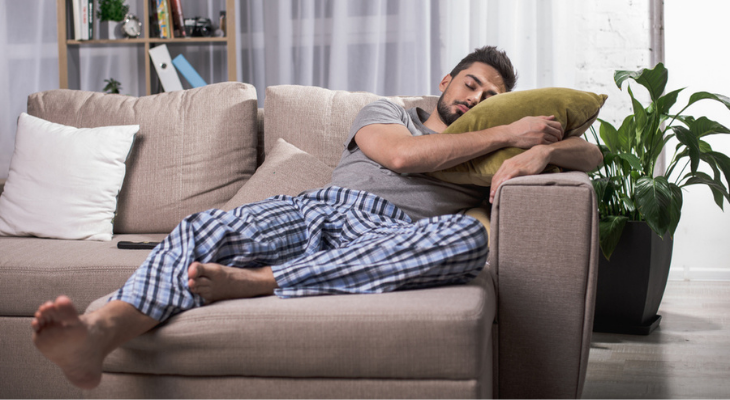What You Need to Know About Neck Spasms
When a neck spasm hits, even the slightest movement can cause intense pain. Although the spasms are usually short-lived, they can become a chronic problem in some cases. If you suffer from frequent neck spasms, understanding the cause can help you avoid future bouts of pain.
Why Neck Spasms Happen
Have you ever turned your head quickly and felt a tight, painful sensation in your neck? The pain occurs when the muscles in your neck spasm or tighten unexpectedly. Spasms can last several minutes or linger for days or weeks. Chronic or frequent spasms can cause pain and headaches that interfere with your usual activities. Even if the spasm goes away quickly, you may still experience pain due to sore muscles.
Neck pain and spasms are common problems for many of us. In fact, 20 to 70 percent of Americans will experience neck pain that interferes with their usual activities at some point in their lives, according to Practical Pain Management.
Neck Spasms can be caused by:
- Poor Posture. Slouching strains your neck, shoulders, and upper back muscles, increasing your risk of spasms. In addition to spasms, you may also develop headaches due to poor posture.
- Using Digital Devices. Looking downward to use smartphones, tablets, and other digital devices can cause a condition called tech neck. Holding your head in a downward position stresses the muscles in your neck, triggering spasms. Eventually, tech neck can cause spinal misalignments, early-onset arthritis, and muscle or nerve damage.
- Holding Your Head in an Uncomfortable Position. Spasms can be a problem if you’re a mechanic, plumber, or work in another type of job that requires you to twist or turn your head.
- Stress. Stress can tighten the neck, shoulder, and upper back muscles, causing spasms.
- Your Sleep Habits. Sleeping on a pillow or mattress that doesn’t adequately support your body may mean that you wake up with an aching neck.
- Sprain or Strain. An injury to the muscles or ligaments in your neck could also be to blame for your spasms.
What You Can Do About Neck Spasms
Do you reach for a bottle of ibuprofen, naproxen sodium, or other nonsteroidal anti-inflammatory drugs (NSAIDs) when you have neck spasms? Although many people believe taking an NSAID can be useful in treating your symptoms, long-term or frequent use of NSAIDs can cause upset stomachs, ulcers, gastrointestinal bleeding, or even liver damage in some cases. Luckily, trying a few of these recommendations will help relax your muscles and ease your pain naturally:
- Ice and Heat. Ice packs reduce inflammation and relieve pain. (Don’t use ice packs for more than 15 to 20 minutes at a time, as frostbite could occur.) A heating pad, hot water bottle, or a stream of hot water from a showerhead will help loosen and relax tight muscles.
- Massage. Do-it-yourself or professional massages relax tight muscles and prompt your body to produce endorphins, chemicals that act like natural painkillers.
- Stretches. Slowly dropping your head toward your shoulder and other gentle neck exercises may help stretch the muscles and put an end to the spasm.
If you still have spasms, it’s a good idea to call the chiropractor. Your chiropractor will develop a treatment plan based on your symptoms and your physical exam. The plan may include:
- Spinal manipulation. This hands-on therapy realigns the vertebrae in your neck and decreases muscle tension.
- Massage. In addition to loosening muscles, massage also improves circulation, which can speed healing.
- Trigger Point Therapy. Trigger point therapy relaxes muscle fibers that cause knots in your neck and may reduce your spasms.
- Ultrasound Therapy. Ultrasound waves relax and warm muscles, relieving pain.
- Soft Tissue Manipulation. Your chiropractor uses handheld tools to find the source of your pain and loosen tight tissues.
- Transcutaneous Electrical Nerve Stimulation (TENS). A gentle electrical current prevents pain signals from reaching the brain.
- Traction. This treatment relieves pain and loosens muscles by gently increasing the space between your vertebrae
- Exercises. Your chiropractor can teach you exercises that improve your posture and strengthen the muscles that support your neck and core.
Could a visit to the chiropractor ease your neck spasms? Get in touch with us if you’re ready to schedule your appointment.
Sources:
Practical Pain Management: About Back/Neck, Spine and Shoulder Pain – The Statistics, 7/29/19
SPINE-Health: How to Relieve a Neck Muscle Spasm, 11/19/19













